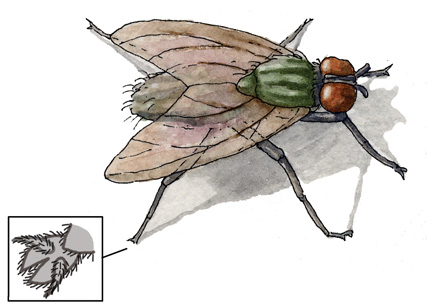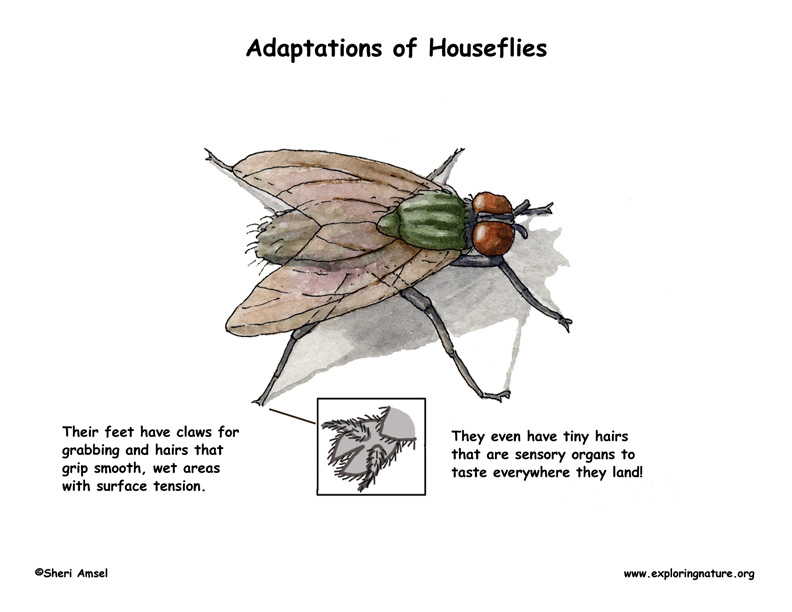

Adaptation in a population of living things happens as a result of an adaptive trait. This is any inheritable trait that increases its survival rate so that it can live longer, reproduce longer, and have more offspring (that also have that trait). Adaptive traits can improve an animal's ability to find food, make a safer home, escape predators, survive cold or heat or lack of water.
Houseflies are well adapted for their lifestyle. They fly around looking for things on which to feed and lay eggs. Their feet are made for just that purpose. They have claws for grabbing and hairs that grip smooth, wet areas with surface tension. They even have tiny hairs that are sensory organs so they can take a quick taste of everywhere they land! These adaptive traits are physical adaptations.
For Discussion and Critical Thinking:
The housefly has adaptive traits that helps it survive everywhere around the world.
1. Name one of the housefly’s adaptive traits and how it helps it survive:
2. Because of its diet would you call the housefly a herbivore, carnivore, omnivore or detritivore? Explain.
3. Explain how houseflies, because of how they taste potential food, could also spread disease among humans:
4. Name a few other animals that might eat houseflies so could be considered beneficial to humans:
When you research information you must cite the reference. Citing for websites is different from citing from books, magazines and periodicals. The style of citing shown here is from the MLA Style Citations (Modern Language Association).
When citing a WEBSITE the general format is as follows.
Author Last Name, First Name(s). "Title: Subtitle of Part of Web Page, if appropriate." Title: Subtitle: Section of Page if appropriate. Sponsoring/Publishing Agency, If Given. Additional significant descriptive information. Date of Electronic Publication or other Date, such as Last Updated. Day Month Year of access < URL >.
Amsel, Sheri. "Adaptations of the Housefly " Exploring Nature Educational Resource ©2005-2024. December 13, 2024
< http://www.exploringnature.org/db/view/Adaptations-of-the-Housefly- >

